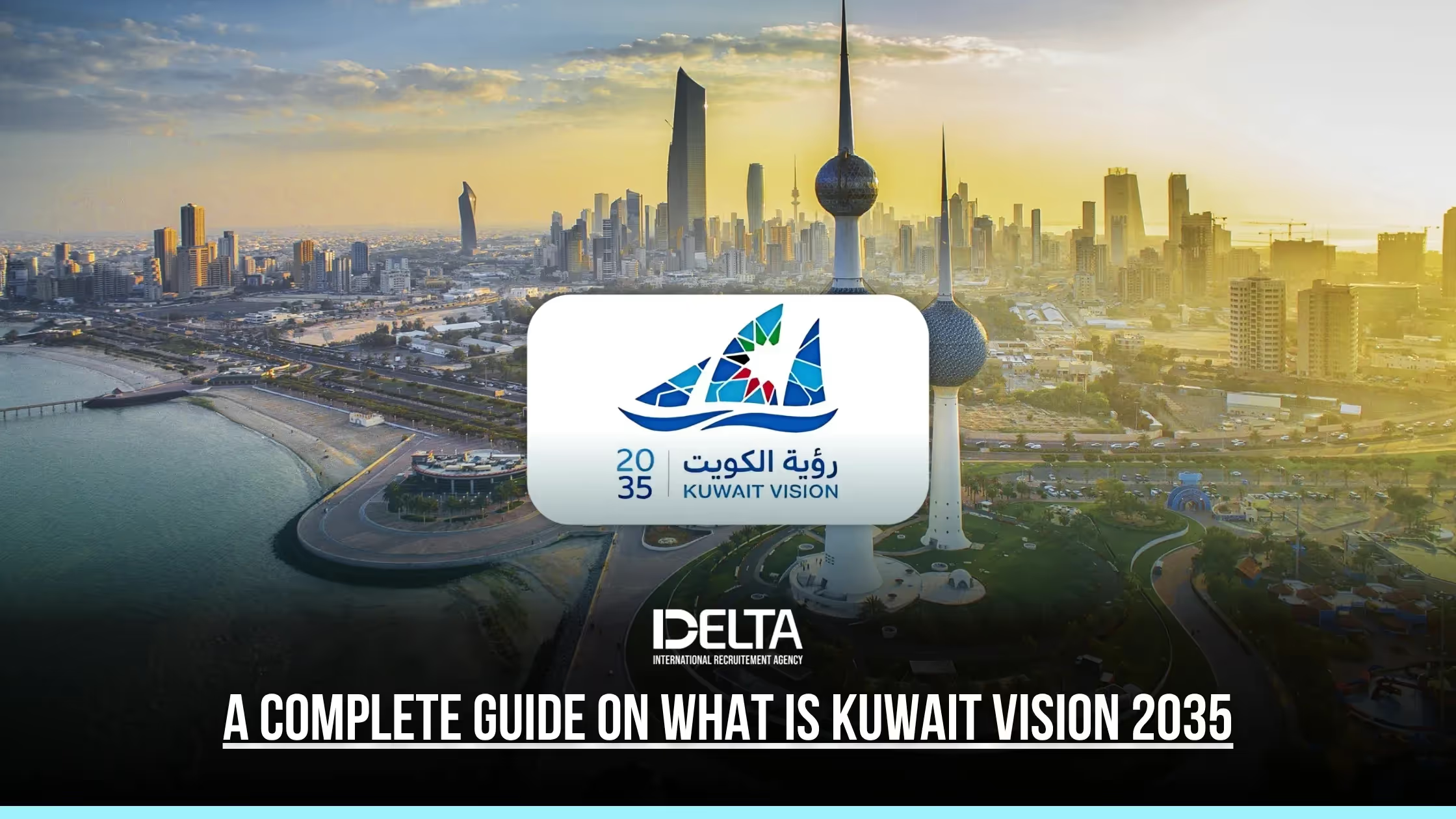Rising oil dependency, fluctuating global markets, and a growing youth population have placed Kuwait at a crossroads. Many citizens and investors are concerned about the nation’s economic sustainability, job opportunities, and quality of life.
How can Kuwait secure its future and elevate its global standing? Kuwait Vision 2035 emerges as the answer, offering a strategic blueprint to address these pressing challenges. This guide explores how Kuwait Vision 2035 aims to transform the country, diversify its economy, and create a brighter future for all, providing actionable insights and solutions throughout.
What is Kuwait Vision 2035?
Kuwait Vision 2035, also known as “New Kuwait,” is a comprehensive national development strategy designed to transform Kuwait into a leading regional financial, commercial, and cultural hub by the year 2035. Launched in 2017, this vision is anchored in the ambition to diversify the economy, reduce reliance on oil, and promote sustainable growth across all sectors.
The plan is structured around seven strategic pillars and aligns with the United Nations Sustainable Development Goals (SDGs), ensuring Kuwait’s progress is measured against global benchmarks.
Kuwait Vision 2035 Pillars: The Foundation of Transformation
The success of Kuwait Vision 2035 relies on seven core pillars, each targeting a vital area of national development:
|
Pillar |
Focus Area |
|
Sustainable Diversified Economy |
Economic diversification, private sector growth |
|
Effective Civil Service |
Administrative reform, transparency, efficiency |
|
Sustainable Living Environment |
Urban development, environmental protection |
|
Developed Infrastructure |
Transportation, housing, utilities |
|
High Quality Healthcare |
Healthcare access, innovation, public health |
|
Creative Human Capital |
Education, skills development, workforce competitiveness |
|
Global Positioning |
International partnerships, global competitiveness |
These pillars serve as the framework for hundreds of strategic projects and initiatives, driving Kuwait toward its 2035 goals.
Key Goals of Kuwait Vision 2035
Kuwait Vision 2035 sets out clear, ambitious objectives that address the country’s most urgent needs:
- Transform Kuwait into a financial and trade hub regionally and internationally.
- Diversify the economy by developing non-oil sectors such as finance, healthcare, technology, and tourism.
- Increase private sector participation to drive growth and create jobs.
- Improve standards of living through better infrastructure, housing, and public services.
- Invest in human capital by enhancing education and training for the Kuwaiti workforce.
- Modernize government administration for greater efficiency and transparency.
- Preserve national identity and social values while promoting innovation and inclusivity.
Major Projects Under Kuwait Vision 2035
Several flagship projects showcase the ambition of Kuwait Vision 2035 and its drive for modernization:
- Madinat Al-Hareer (Silk City): A mega-city project featuring the iconic Burj Mubarak Al Kabir Tower, aiming to attract global business and tourism.
- South Saad Al Abdullah Smart City: Designed to house 400,000 residents, this project integrates advanced technology and AI for urban management.
- Sheikh Jaber Al-Ahmad Al-Sabah Causeway: One of the world’s longest sea bridges, improving connectivity and trade.
- Expansion of Kuwait International Airport: Enhancing capacity and positioning Kuwait as a regional aviation hub.
- Renewable Energy Initiatives: Investments in solar and wind energy to support sustainable development.
Kuwait Vision 2035 and Economic Diversification
A central tenet of Kuwait Vision 2035 is reducing the nation’s reliance on oil revenues. The plan emphasizes:
- Promoting private sector growth through public-private partnerships (PPPs), especially in infrastructure, logistics, and healthcare.
- Encouraging foreign direct investment by creating a business-friendly environment and cutting bureaucratic red tape.
- Developing new industries such as technology, finance, and tourism to create diverse revenue streams and job opportunities.
Key Economic Diversification Targets:
- Increase non-oil sector contribution to GDP.
- Expand private sector employment by 69%.
- Attract more than 400 million Kuwaiti Dinars in foreign investment in the short-to-medium term.
Here is a detailed guide on What is Saudi Vision 2030? Update & Progress
Social Development and Human Capital in Kuwait Vision 2035
Kuwait Vision 2035 recognizes that true progress depends on its people. The strategy focuses on:
- Enhancing education and vocational training to equip citizens with skills for a competitive labor market.
- Promoting gender equality and youth empowerment to ensure inclusive growth.
- Improving healthcare infrastructure and services to raise the standard of public health and well-being.
Human Capital Initiatives:
- Reforming the education system to align with labor market needs.
- Investing in healthcare technology and preventive care.
- Supporting women’s participation and leadership in the workforce.
Challenges and Obstacles Facing Kuwait Vision 2035
While Kuwait Vision 2035 is ambitious, it faces significant hurdles:
- Heavy reliance on oil: Fluctuating oil prices threaten economic stability.
- Skill gaps and workforce challenges: Bridging the gap between education and labor market needs is critical.
- Bureaucratic obstacles: Administrative inefficiencies and regulatory hurdles can slow progress.
- Social integration: Ensuring all segments of society benefit from development requires careful planning.
Overcoming these challenges demands coordinated efforts from government, private sector, and society.
How Kuwait Vision 2035 Impacts Citizens
Kuwait Vision 2035 is designed to improve the daily lives of Kuwaitis in tangible ways:
- Better job opportunities through economic diversification and private sector growth.
- Improved infrastructure with modern cities, efficient transport, and upgraded utilities.
- Higher quality healthcare and expanded access to medical services.
- Enhanced education and training to prepare youth for future careers.
- Stronger social safety nets and inclusive policies for all citizens.
Public-Private Partnerships: A Cornerstone of Kuwait Vision 2035
Public-private partnerships (PPPs) are essential to achieving the goals of Kuwait Vision 2035. These collaborations:
- Mobilize private investment for major infrastructure and development projects.
- Foster innovation and efficiency in public services.
- Create new opportunities for Kuwaiti entrepreneurs and businesses.
- Support sustainable growth in sectors like energy, logistics, and healthcare.
Also Read: Kuwait Is the New Land Opportunities for Pakistani Jobseekers
Kuwait Vision 2035: Progress and Future Outlook
Kuwait Vision 2035 is a long-term journey, structured through five-year national development plans. Notable progress has been made in infrastructure, urban development, and policy reforms. However, sustained commitment, transparency, and societal participation remain crucial for success.
Future Focus Areas:
- Advancing the knowledge economy and digital transformation.
- Transitioning toward a “Smart Kuwait” with integrated technology.
- Deepening economic diversification and global competitiveness.
Conclusion
Kuwait Vision 2035 offers a strategic, actionable roadmap for transforming Kuwait into a recruitment hub, dynamic, diversified, and prosperous nation. By addressing economic, social, and institutional challenges, the vision provides hope and direction for citizens, investors, and policymakers alike. As Kuwait continues to implement its ambitious plans, the country moves closer to realizing its full potential on the global stage.




























